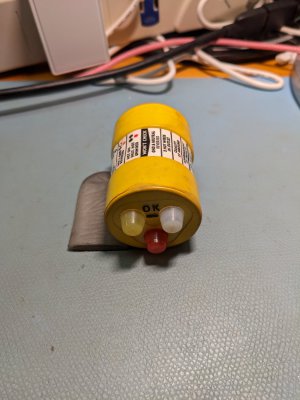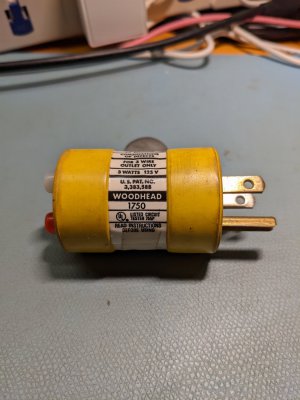- Joined
- Jul 28, 2017
- Messages
- 2,383
I'm a little peeved at the moment. The laptop I've been using for my lab (which includes the XRF/Teensy stuff) died yesterday. At least, it didn't boot up when I pressed the power button  . It doesn't even perform the POST sequence -- the fan spins up for a moment and then it shuts down. This vintage of laptop (a Dell Inspiron 6430) is supposed to display some trouble codes on the LEDs but that doesn't seem to be happening, either.
. It doesn't even perform the POST sequence -- the fan spins up for a moment and then it shuts down. This vintage of laptop (a Dell Inspiron 6430) is supposed to display some trouble codes on the LEDs but that doesn't seem to be happening, either.
I've gone through all the recovery procedures I found on the internet, which basically amount to removing the battery, holding the power button down for 30-60 seconds, then re-installing the battery. No luck. Some have suggested powering up the computer without the battery, which apparently can get confused about its charge state: but when I tried it, the computer didn't do ANYTHING, just acted like an expensive paperweight.
I bought the laptop as a refurb and up to now it's worked great. Fortunately I've been doing regular backups so I should be able to recover fairly quickly. Since the laptop doesn't get far enough to display any error messages regarding the SSD I think it's likely that the SSD is OK so one option would be to extract it and stuff it into another computer, or use a USB adapter to convert it into an external drive.
I opened the computer up and found that the battery for the BIOS backup is dead as a doornail. I ordered a replacement, on the theory that it's a relatively cheap item and will try that but am not optimistic it will fix the problem. The battery is a CR2032 with tabs spot-welded on it, and some vendors think that makes it worth $23. Crazy. Fortunately Capitalism works, but, even so, it cost almost $5 for the stupid thing.
I've gone through all the recovery procedures I found on the internet, which basically amount to removing the battery, holding the power button down for 30-60 seconds, then re-installing the battery. No luck. Some have suggested powering up the computer without the battery, which apparently can get confused about its charge state: but when I tried it, the computer didn't do ANYTHING, just acted like an expensive paperweight.
I bought the laptop as a refurb and up to now it's worked great. Fortunately I've been doing regular backups so I should be able to recover fairly quickly. Since the laptop doesn't get far enough to display any error messages regarding the SSD I think it's likely that the SSD is OK so one option would be to extract it and stuff it into another computer, or use a USB adapter to convert it into an external drive.
I opened the computer up and found that the battery for the BIOS backup is dead as a doornail. I ordered a replacement, on the theory that it's a relatively cheap item and will try that but am not optimistic it will fix the problem. The battery is a CR2032 with tabs spot-welded on it, and some vendors think that makes it worth $23. Crazy. Fortunately Capitalism works, but, even so, it cost almost $5 for the stupid thing.



